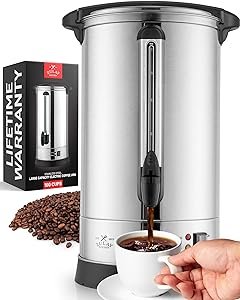For many, coffee isn’t just a beverage; it’s a ritual, an experience, and an essential part of daily life. However, whether you’re a coffee enthusiast, a health-conscious individual, or a home barista, you might have wondered how long your beloved black coffee can safely sit out at room temperature. In this post, we’ll explore the factors influencing the shelf life of black coffee, its flavor changes over time, and important health considerations.

The Basics: What Happens to Black Coffee Over Time?
Initial Freshness
When you freshly brew a cup of black coffee, it’s at its peak in terms of flavor and aroma. The oils and compounds that give coffee its complex profile are most vibrant immediately after brewing. Ideally, black coffee should be consumed within 20-30 minutes to enjoy it at its best.
Degradation Process
Once brewed, black coffee begins to undergo a series of chemical changes. The flavor compounds start breaking down, and oxidation occurs. This degradation can lead to a stale, bitter taste. While these changes might not be immediately noticeable, they become more pronounced as the coffee sits out longer.
How Long Can Black Coffee Sit Out?
Fast Brew Stainless Steel Hot Beverage Dispenser

Short-Term Exposure (Up to 4 Hours)
At room temperature, black coffee can safely sit out for up to 4 hours without significant health risks. During this period, the coffee will begin to lose its optimal taste, but it is still safe to drink. Many coffee lovers find that while the flavor isn’t as fresh, it’s still enjoyable within this timeframe.
Medium-Term Exposure (4 to 12 Hours)
Beyond 4 hours, the taste of black coffee continues to deteriorate. The coffee may develop a sour, bitter flavor as the oils start to go rancid. While it’s still generally safe to consume within this period, the taste might not be pleasant, and some of the nutritional benefits may diminish.
Long-Term Exposure (12 to 24 Hours)
After 12 hours at room temperature, black coffee’s quality significantly drops. The risk of bacterial growth increases, especially if the coffee was exposed to air or other contaminants. Although the likelihood of severe health risks remains low, particularly for black coffee (as opposed to coffee with milk or cream), it’s best to avoid drinking it.
Beyond 24 Hours
Leaving black coffee out at room temperature for more than 24 hours is not recommended. At this point, the coffee is likely to taste extremely bitter and stale. Additionally, the potential for bacterial contamination becomes a more serious concern, making it unsafe to drink.
Factors Influencing Coffee Shelf Life
Temperature
Room temperature typically ranges from 68°F to 72°F (20°C to 22°C). Hotter environments accelerate the degradation process, while cooler ones can slow it down. If you live in a particularly warm climate, consider these factors as they can affect your coffee’s longevity.
Exposure to Air
Exposure to air can speed up the oxidation process, negatively impacting the flavor. Keeping coffee in a sealed container, such as a thermos, can help maintain its freshness longer.
Type of Coffee
The type of coffee beans and how they’re brewed can also influence how long the coffee remains palatable. For instance, lighter roasts might retain their flavor profile longer than darker roasts.
Health Considerations
Bacterial Growth
While black coffee is less prone to bacterial growth compared to dairy-based coffee drinks, it’s still susceptible over extended periods. Bacteria thrive in moist environments, and even though coffee’s acidity can inhibit some bacterial growth, it’s not a foolproof barrier.
Nutritional Value
The nutritional benefits of coffee—such as antioxidants—diminish over time. Drinking stale coffee won’t provide the same health benefits as a fresh cup.
Potential Risks
Consuming black coffee that’s been left out for too long can lead to digestive discomfort for some individuals. If the coffee has developed mold or an off-putting smell, it’s best to discard it.
Tips for Maintaining Coffee Freshness
Use an Airtight Container
To extend the shelf life of your black coffee, consider transferring it to an airtight container immediately after brewing. A thermos or vacuum flask can help maintain the temperature and reduce exposure to air.
Refrigeration
If you know that you won’t be able to drink your coffee within a few hours, refrigerating it is a good option. Cold brew coffee, for example, can last up to a week in the refrigerator, retaining much of its flavor profile.
Reheating Coffee
Reheating black coffee is a debated topic among coffee enthusiasts. While it can bring some warmth back to the coffee, it often further alters the taste. If you must reheat your coffee, do so gently using a microwave or stovetop, avoiding boiling.
Fresh Brew
The best way to enjoy black coffee is to brew it fresh as needed. Smaller batches ensure that you always have fresh, flavorful coffee on hand without the worry of it going stale.

Frequently Asked Questions (FAQs)
1. Can I drink black coffee that has been left out overnight?
While it may still be safe to drink, the taste will likely be unpleasant due to the extended exposure to air and potential bacterial growth.
2. Does black coffee spoil?
Black coffee doesn’t spoil in the traditional sense like dairy products, but it does go stale and can develop an off flavor after being left out for too long.
3. How can I tell if my black coffee has gone bad?
Signs that black coffee has gone bad include a sour or bitter taste, a rancid smell, and the presence of mold.
4. Is it safe to reheat black coffee?
Yes, it is safe to reheat black coffee, but the flavor may be compromised. Reheat it gently to avoid altering the taste further.
5. How long can cold brew coffee sit out at room temperature?
Cold brew coffee can sit out for up to 12 hours at room temperature, but it’s best enjoyed fresh or stored in the refrigerator.
Understanding how long black coffee can sit out at room temperature allows you to make informed decisions about when to enjoy your cup and when it’s best to brew a fresh one. By following the tips provided, you can ensure that your coffee-drinking experience remains both delightful and safe.






